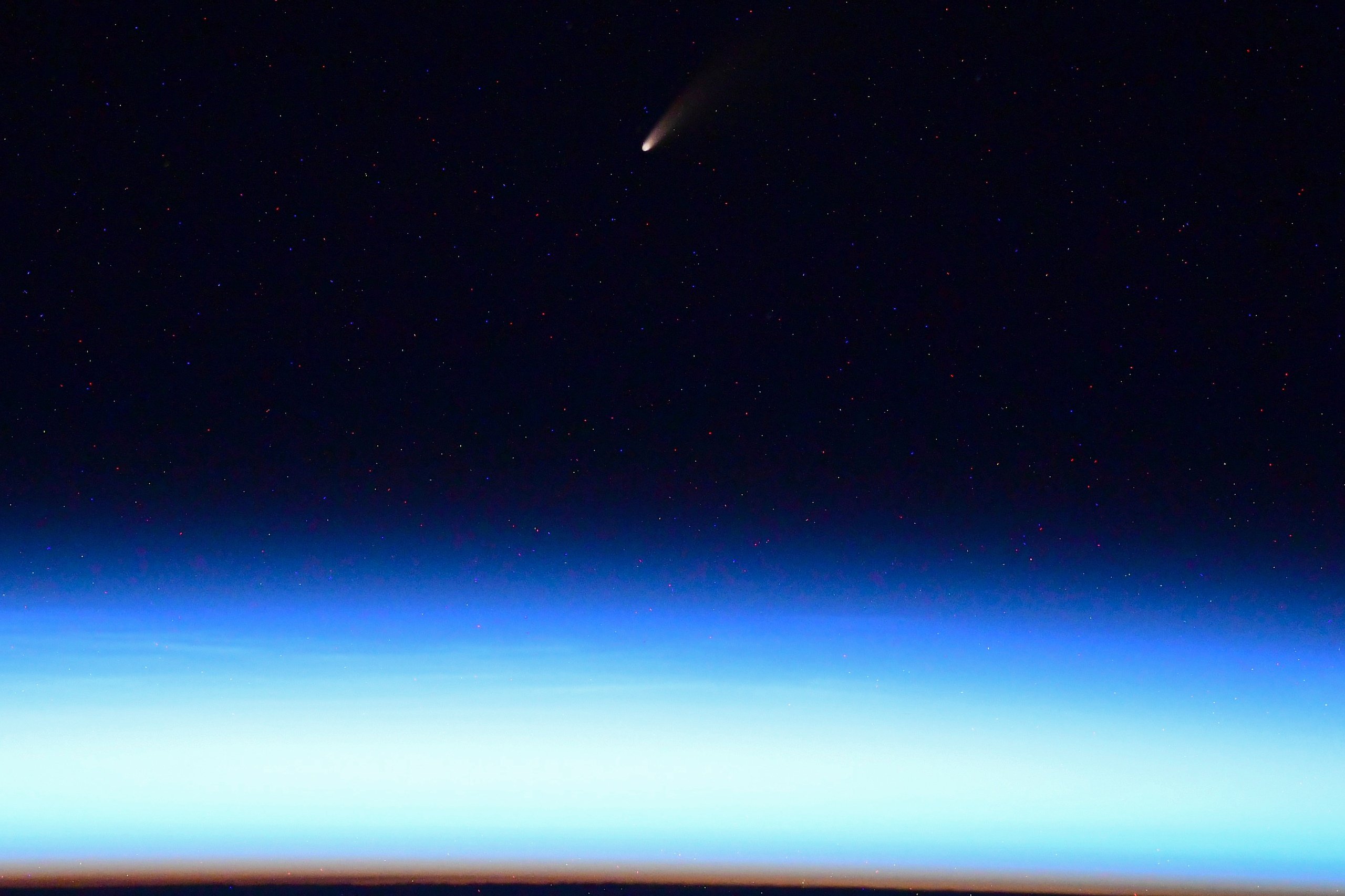[:ja]イワン・ワグナー宇宙飛行士がISSから撮影したネオワイズ彗星(C/2020 F3(NEOWISE))です。地球の大気層が下方にかかり幻想的です。ネオワイズ彗星は、放物線に近い軌道の逆行する彗星です。2009年に打ち上げられたNASAの赤外線天文衛星NEOWISE(Near-Earth Objects WISE)によって2020年3月27日に発見された約17等級の天体です。地球への再接近は7月23日、約1億キロ(0.69AU)とされており、この近日点通過によって、軌道周期が4500年から6800年に延びると予測されています。

参考文献: Ivan Vagner’s Tweet
地球俯瞰画像を見る: LiVEARTH
[Earthview Wonders] No.1064: NEOWISE Comet
Astronaut Ivan Vagner captured a stunning photo of the NEOWISE Comet from ISS, with the Earth’s atmosphere. C/2020 F3 (NEOWISE), or Comet NEOWISE, is a retrograde comet with a near-parabolic orbit discovered on March 27, 2020 by the NEOWISE space telescope. It passed closest to the Sun on July 3, 2020. Closest approach to Earth will occur 23 July 2020 at a distance of 0.69 AU (103 million km; 270 LD). This perihelion passage will increase the comet’s orbital period from about 4500 years to about 6800 years.

Reference: Ivan Vagner’s Tweet
See earthview photo gallery: LiVEARTH[:en][Earthview Wonders] No.1064: NEOWISE Comet
Astronaut Ivan Vagner captured a stunning photo of the NEOWISE Comet from ISS, with the Earth’s atmosphere. C/2020 F3 (NEOWISE), or Comet NEOWISE, is a retrograde comet with a near-parabolic orbit discovered on March 27, 2020 by the NEOWISE space telescope. It passed closest to the Sun on July 3, 2020. Closest approach to Earth will occur 23 July 2020 at a distance of 0.69 AU (103 million km; 270 LD). This perihelion passage will increase the comet’s orbital period from about 4500 years to about 6800 years.

Reference: Ivan Vagner’s Tweet
See earthview photo gallery: LiVEARTH[:]